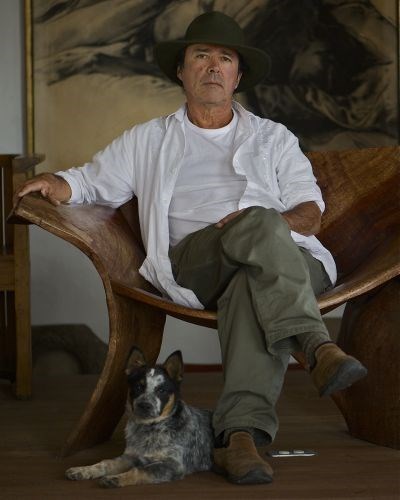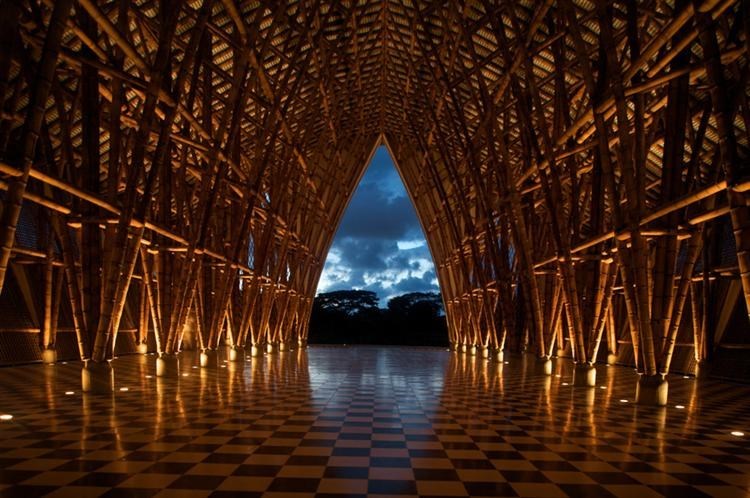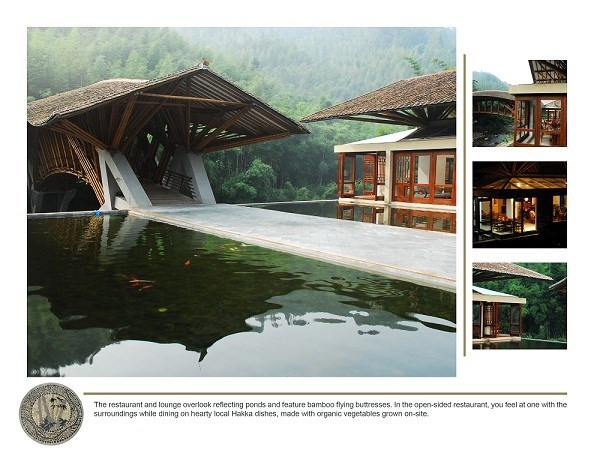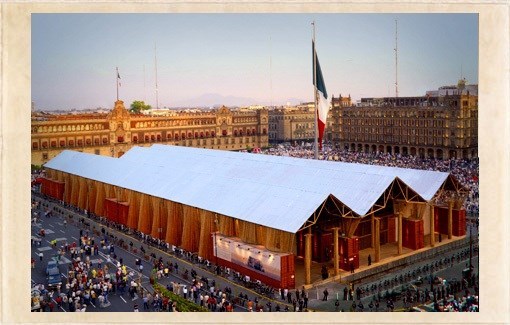 |
| Simon Velez (The Power of Culture (Pedro Franco)) |
My hero is Colombian architect Simon Velez, a man who is changing the way the world looks at sustainable architecture. For Simon Velez, architecture runs in the family. Born in Manizales, Colombia in 1949, Velez's father and grandfather were both architects, giving Velez the discerning eye of a structural problem solver from an early age. Since graduating from Los Andes University more than forty years ago, Mr. Velez has been a leading proponent in sustainable building; particularly in the use of bamboo. His ingenuity and determination have propelled this once humble building material to the leading edge of architectural design. Like most innovations, Simon's work with bamboo came from necessity. Since his earlier work often found him in rural areas, one of his greatest challenges was the prohibitively high cost of importing standard building materials like brick and mortar. Velez took advantage of an abundant local resource; bamboo, a material that had previously been discounted as an essential building component, except in the case of relatively temporary housing structures like huts.
 |
| Iglesia Sin Religion Interior (archleague.org ()) |
"In Colombia, there is a stigma attached to bamboo as being the 'wood of the poor,' and many architects turn their noses up at it," Velez has said, "But I've discovered it has a lot of advantages." (Los Angeles Times) Bamboo is very strong while retaining a surprising amount of flexibility. Known by some as "vegetable iron", bamboo has enough give to make it desirable in places prone to earthquakes and boasts a weight-to-resistance ratio nearly twice that of steel. Given its beauty, strength and abundance, why then has bamboo been overlooked as a contemporary building material? The answer lies in the way one length of bamboo is connected to another. Velez explains, "In local construction methods, the bamboo sticks were connected using natural fibers. (rope) The humid and hot climate, however, eroded the stability of the structure over time. By filling the hollow bamboo sticks with gravel and connecting them with rivets, I achieved the same durability achieved by using concrete or steel." (krachtvancultuur.nl)
 |
| CrossWaters Ecolodge China (asla.org (Simon Velez)) |
What seems to be a simple solution to building with bamboo has actually taken years of working closely with a core group of builders that includes his best friend, Marcelo Villegas. The development of this tension joint allows builders to join bamboo beams end-to-end. This gives Velez the ability to design bamboo structures with the long-spans, towering ceilings and dramatic overhangs that have become his trademark in the lyrical structures he creates. Once used primarily for patio furniture, fishing poles and picture frames, bamboo is shaking off old perceptions of the past to become a building material of the future. For Expo Hanover 2000, Velez built the 2000 square meter bamboo pavilion for the Zero Emissions Research and Initiative Foundation. This was the first time a bamboo structure had ever been granted a building permit in Germany. The Crosswaters Hotel in China, a visionary blending of bamboo, concrete and water, was among the first eco-friendly structures in the country. His largest work resides in Mexico City. At 5000 square meters, The Museo Nomada Colbert is the largest bamboo structure ever created. More recently, his dramatic bamboo structures garnered him the 2009 Principal Prince Claus Award in the Netherlands, an honor that lauded his "progressive approach to culture and development."
 |
| Nomadic Museum Mexico City (ashesandsnow.org (Gregory Colbert)) |
Though Velez's ideas about building with bamboo are taking root in the world of architecture, there remains resistance to his ideas. It took him over twenty years just to get bamboo approved as a construction material in Colombia (2009) where he overcame stiff opposition from structural engineers and fellow architects. Despite the obstacles, Velez continues on. Bamboo's strength and versatility have won over many doubters, but there remains another quality that just might win over the rest. Bamboo is incredibly replaceable. Unlike trees that often require decades to reach a maturity where they're useful in construction, bamboo generally grows at a rate of a foot a day. Amazingly, it can grow from newborn shoot to a massive 60 to 80 foot, eight-inch diameter plant in a single growing season. "I've been told that, without noticing, we've come to appreciate once again, a style of mixed building, using mineral components like concrete and vegetal ones like bamboo." Velez has said, "We use too much of the mineral in architecture: the 'carnivorous'. We need more 'vegetarian' architecture."
 |
| Bamboo forest (Garden of Eadon ()) |
With deforestation and climate change affecting the way we think about design and manufacturing, innovators like Simon Velez can open our eyes to the possibilities that exist all around us. Bamboo isn't just a durable, affordable, sustainable building material, it's undeniable. And it's turning up, not just in buildings, but in flooring, laminated timbers and cabinetry. It might not be tomorrow, but you'll see a bamboo structure soon. You'll recognize the unmistakable material, the graceful organic design at a glance. What you won't see as readily are the massive savings in hardwood forests and greenhouse gases that this abundant and locally harvestable plant offers. You won't see the years of innovation or the struggle to change old prejudices and preconceptions about building with bamboo. But when you see your first bamboo bridge or house or church, you'll be seeing the realization of the life's work of my hero: Architect Simon Velez.
Page created on 10/28/2012 12:00:00 AM
Last edited 4/21/2019 6:16:33 PM
